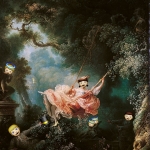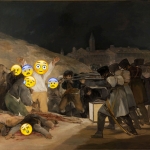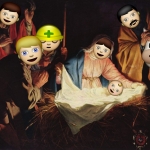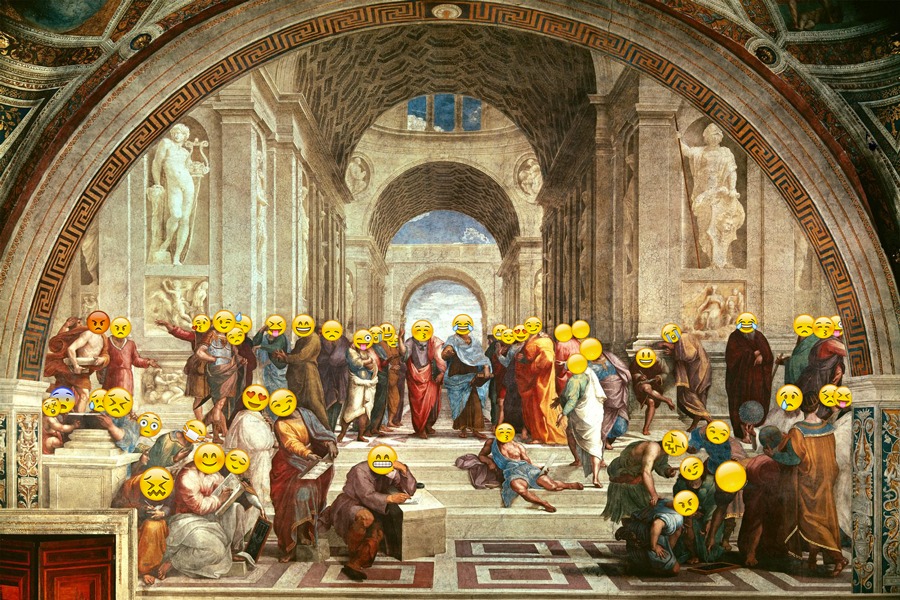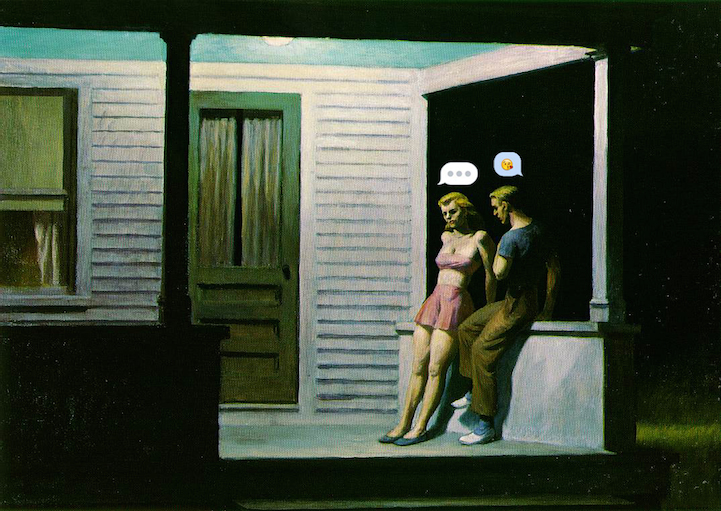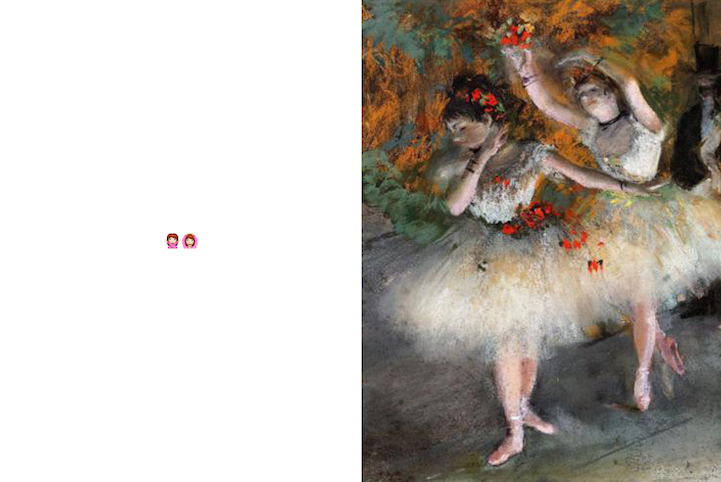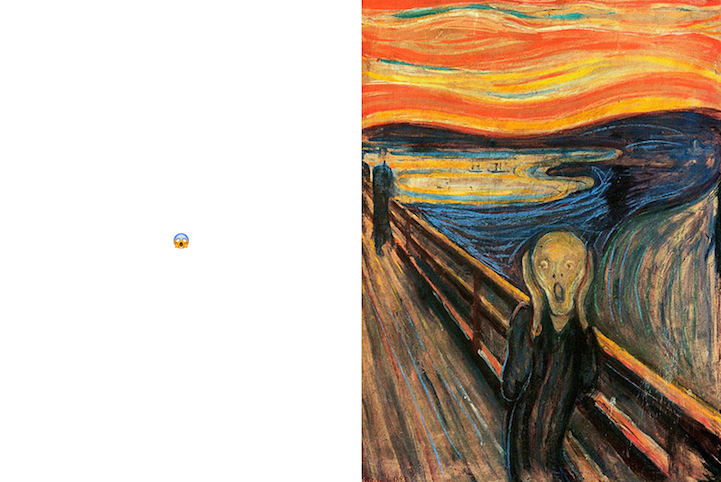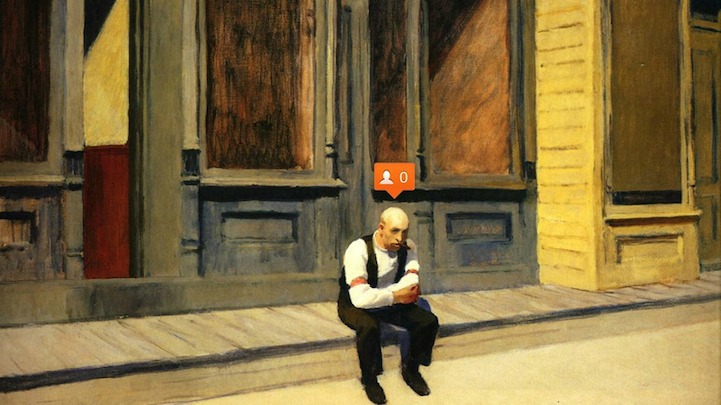
Emoji Art
“Vincent van Gogh. Pablo Picasso. Leonardo da Vinci. Emojis.
The little emoticons have taken over our lives, revolutionizing the we express ourselves. And now they’re taking over the world of art.” Neha Prakash via Mashable
And so, ‘Emoji Art’ has emerged. Check out two works on display at the Emoji Art and Design Show via Mashable, created in response to this new visual culture (insert smiley face emoticon here!)…
Shift Key by Maya Ben-Ezer (source: http://mashable.com/2013/12/03/emoji-art-show-event-annoucement/)
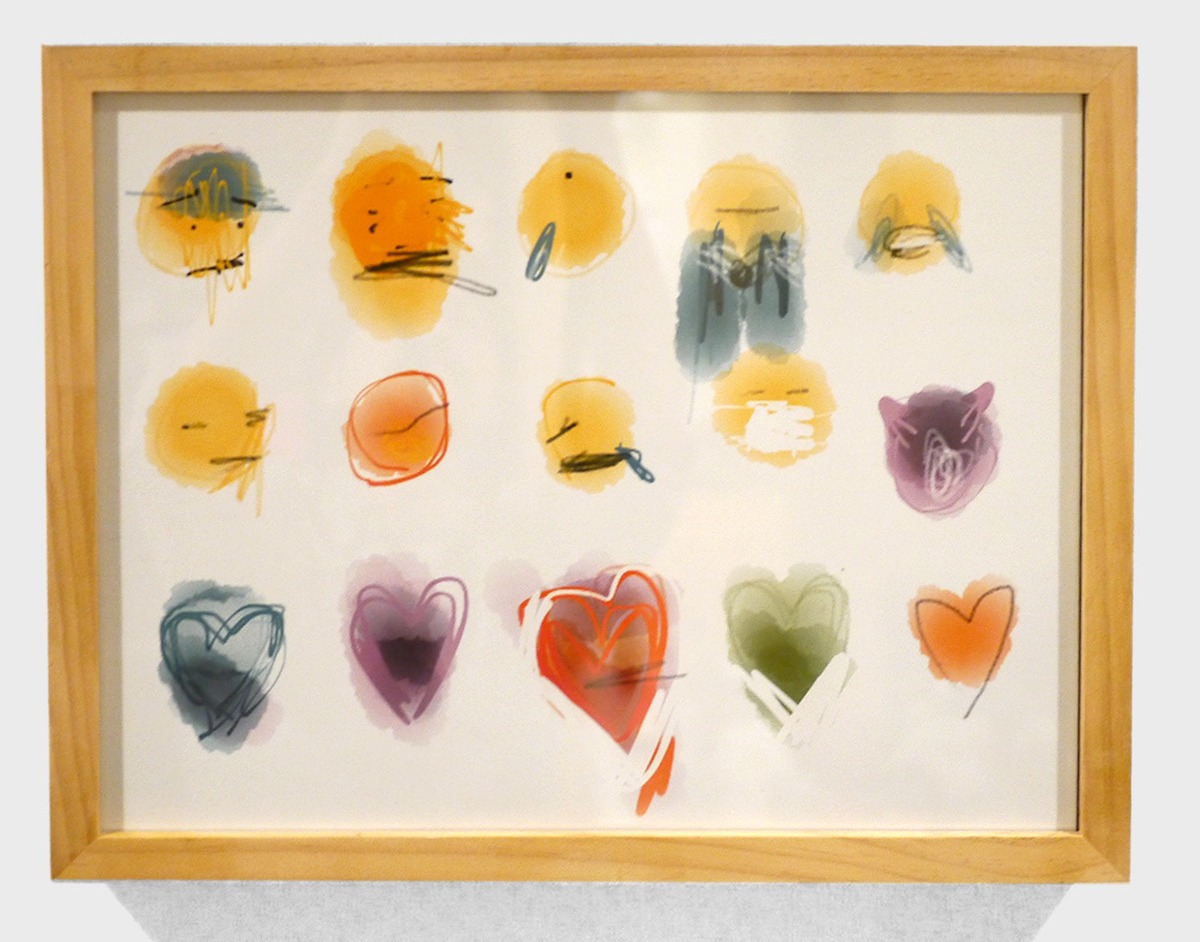
Emojis by Kyle M. F. Williams (source: http://mashable.com/2013/12/03/emoji-art-show-event-annoucement/)
“This visual form of communication isn’t necessarily new. From cave paintings to hieroglyphics to religious and mythological symbols encoded in traditional painting and sculpture, we’ve been communicating through images since the dawn of mankind,” the event’s producers explained. “But its dominance in culture today, especially among millennials, seems to indicate a greater shift in our approach to self-expression.” (Mashable)
Want to see more? I’m sure we will, because, “What was once a smiling face twisted and manipulated into a spectrum of facial expressions has morphed into an overwhelmingly comprehensive visual language akin to hieroglyphics. They’ve taken over text messages and social media, proving capable of communicating simple ideas through images of dancing ballerinas, hammering gavels and steaming (albeit cheerful) piles of poop.” (Katherine Brooks on Huffington Post)
In an epic display of Emoji-power, Carla Gannis has turned a Hieronymus Bosch masterpiece into An emoji explosion (see below). As Carla explains,
“One reason I think these little pictographs are so popular is because we communicate via a keyboard so much. I rarely talk on the phone, preferring to text or DM, etc. And to be honest, I stay very busy, so I connect with friends virtually more than IRL. Emoji provide a means to communicate with more expression, emotion even, in an abbreviated and fast-tempo way, where face/body/image cues are lacking. It’s not surprising that artists and designers would pick up on this visual vernacular as a new expressive medium. I think this show will have a significant impact on showcasing emoji as a new kind of pop/netart.”
You can read the entire interview about her work on the Huffington Post.

The Garden of Emoji Delights, Carla Gannis (source: http://www.huffingtonpost.com/2013/12/13/emoji-bosch_n_4435039.html?ncid=edlinkusaolp00000003)
Huff Post Tech: “Japanese Castle, Western Castle” (below) shows a hypnotic hive of emoji swirling across the screen, while the voice of Siri narrates each expression in a drab monotone. (When Siri reads emoji out loud, she offers quite literal, and strangely bleak, interpretations: “person with pouting face,” “fearful face,” “crying face,” “loudly crying face.”) All the energy of emoji is removed, and what’s left is a pretty sad attempt at emotional expression.
“Although we can be distracted by the colorful nature of this swarm, this piece reminds you that, in the end, this is still a cold technology,” says Zoe Salditch on Huff Post Tech
Japanese Castle, Western Castle from Noah Spidermen on Vimeo.
Clever Interpretations of Famous Artworks Using Emojis
MY MODERN MET In today’s age of technology and internet culture, things like emojis, social media updates, likes and notifications, and Google services have become more familiar to many of us than picking up a newspaper or talking on the phone. Kiev, Ukraine-based artist Nastya Ptichek brings history and the modern age together in a tongue-in-cheek series called Emoji-Nation, which reinterprets classic artworks such Edvard Munch’s The Scream using expressions associated with digital culture and computer technology. The resulting images provide clever and interesting commentary on the impact that technology and the internet have had on our lives.
Ptichek says, “[The project was born when] I realized that standard iOS emojis strongly resemble some well-known paintings of famous artists.” In the first part of Emoji-Nation, she pairs old masterpieces with emoji representations. In the second part, she puts a social media twist on Edward Hopper’s somber paintings.
After the Hopper set, Ptichek says the project “turned into a full concept of correlation between computer technologies and classic art.” Subsequently, in the third part, classical paintings are reintroduced as popular movie posters, mashing together such works as the film Kill Bill and the painting Judith Beheading Holofernes. In the fourth part, common social media problems and computer prompts are incorporated into famous artworks, presenting a humorous spin on many religious masterpieces. The fifth part comments on the huge presence of Google in our lives by incorporating its features and services in various artworks.”
See the entire article by Jenny Zhang on My Modern Met.
Why Is Everyone So Obsessed With Emoji?
MASHABLE: “An emoji says a thousand words.
The little digital images are everywhere, from smartphone operating systems to social media and apps. We’re obsessed, sending an emoji of a dancer next to a smiley face next to crying cat. How did these tiny images take hold of our lives?
“Emoji are a great way to add personality to a text-based conversation,” says Jeremy Burge, the founder of website Emojipedia. Like the name suggests, it’s an encyclopedia for all things emoji, cataloging each creative symbol.
For the quick text generation, sometimes sending one tiny emoji is easier than typing up a response. Everything needs to be conveyed immediately, and nothing is smaller or more expressive than an image.
However, the psychology behind emoji obsession runs a little deeper. In February, Dr. Owen Churches, of the school of psychology at Flinders University in Australia, conducted a study on emoticons. His research showed that people reacted to emoticons the same way they would react to a real human face.”
Read the entire article on Mashable.
And, if you enjoyed this post, you might also like Light Painted Photography.


